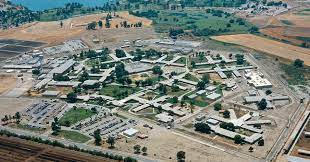
Last week, California formally banned forced and coerced sterilization of women prisoners … again. Governor Jerry Brown signed Senate Bill No. 1135 into law. The bill reads, in part: “This bill would prohibit sterilization for the purpose of birth control of an individual under the control of the Department of Corrections and Rehabilitation or a county correctional facility, as specified.” Not forcing sterilization on women prisoners seems pretty straightforward. Some would even say a no-brainer.
And yet, this law took a lot of brains, and muscle and organizing and history.
The quick story is that the Center for Investigative Reporting revealed, last year, that the California prison system had coerced women prisoners into sterilization. Lawmakers, and in particular the California Women’s Legislative Caucus, called for an investigation. A State audit showed that between 2005 and 2013, 144 tubal ligations were performed on women prisoners. At least 25% of these had no evidence whatsoever of informed consent. Most of the others were dicey. 88 of the women were Latina or Black, and 6 were “other”. All of the women, one hundred percent, had been jailed at least once.
Senator Hannah-Beth Jackson wrote the bill. She worked with Cynthia Chandler, co-founder of the prisoners rights group Justice Now. They worked with former prisoners, such as Kelli Dillon, who could confirm the allegations and, more importantly, put a human face on the story. When the bill was presented, it passed unanimously, thanks to the great work of great investigative reporters, community organizers, legislators, and current and former women prisoners.
The law’s back-story raises many concerns. Between 1909 and 1964, California had compulsory sterilization laws that targeted people of color, the poor, the disabled, those living with mental illnesses, and prisoners. About 20,000 men and women were sterilized without any pretense of consent. Forced sterilization laws were officially banned, by the California legislature, in 1979.
Prison doctors and administrators found loopholes in the ban, and they were back in business, and the only possible witnesses are `unreliable’. After all, they’re repeat offenders, many with low levels of formal education and many with “too many children.” And they’re women, mostly women of color.
In Maryland, when State Delegate Mary L. Washington discovered that women prisoners were being shackled in childbirth, she replied, “Wait. What do you mean, shackled?” When she learned that shackled meant shackled, she launched what she figured was a no-brainer, a ban on shackling women prisoners in childbirth. It took two years of lots of brain and brawn to get that no-brainer passed.
These crimes by the State succeed because the population at large has been persuaded, for decades, that these women are the problem, and it’s best to leave the problem to the experts, prison doctors and prison guards. That’s how we’ve ended up in a world of what-do-you-mean.
In California, members of Justice Now are organizing an education campaign for current women prisoners and another for former prisoners. We all need that education. What do you mean, sterilized without consent? What do you mean, shackled?
(Photo credit: CDCR via Common Dreams)
